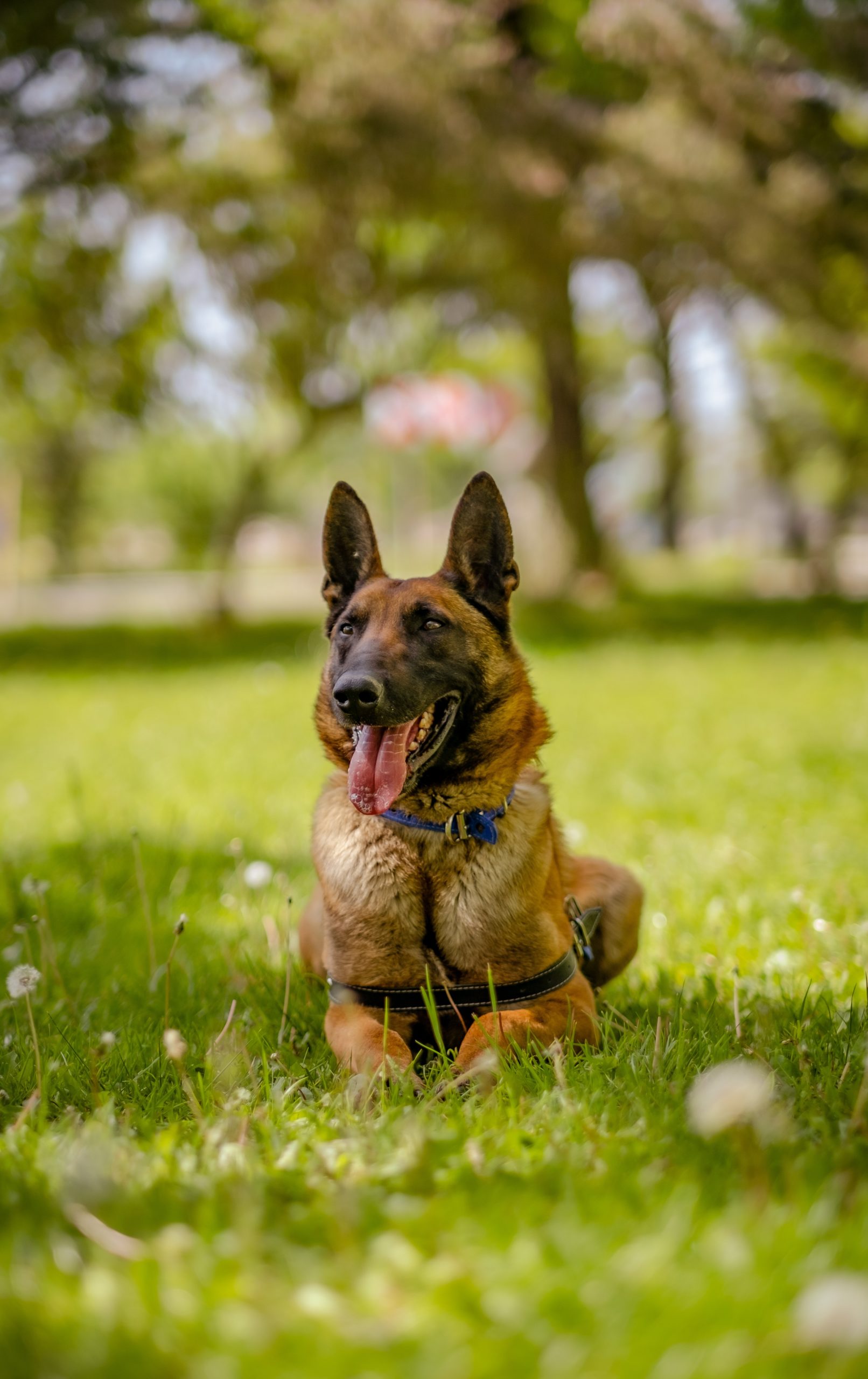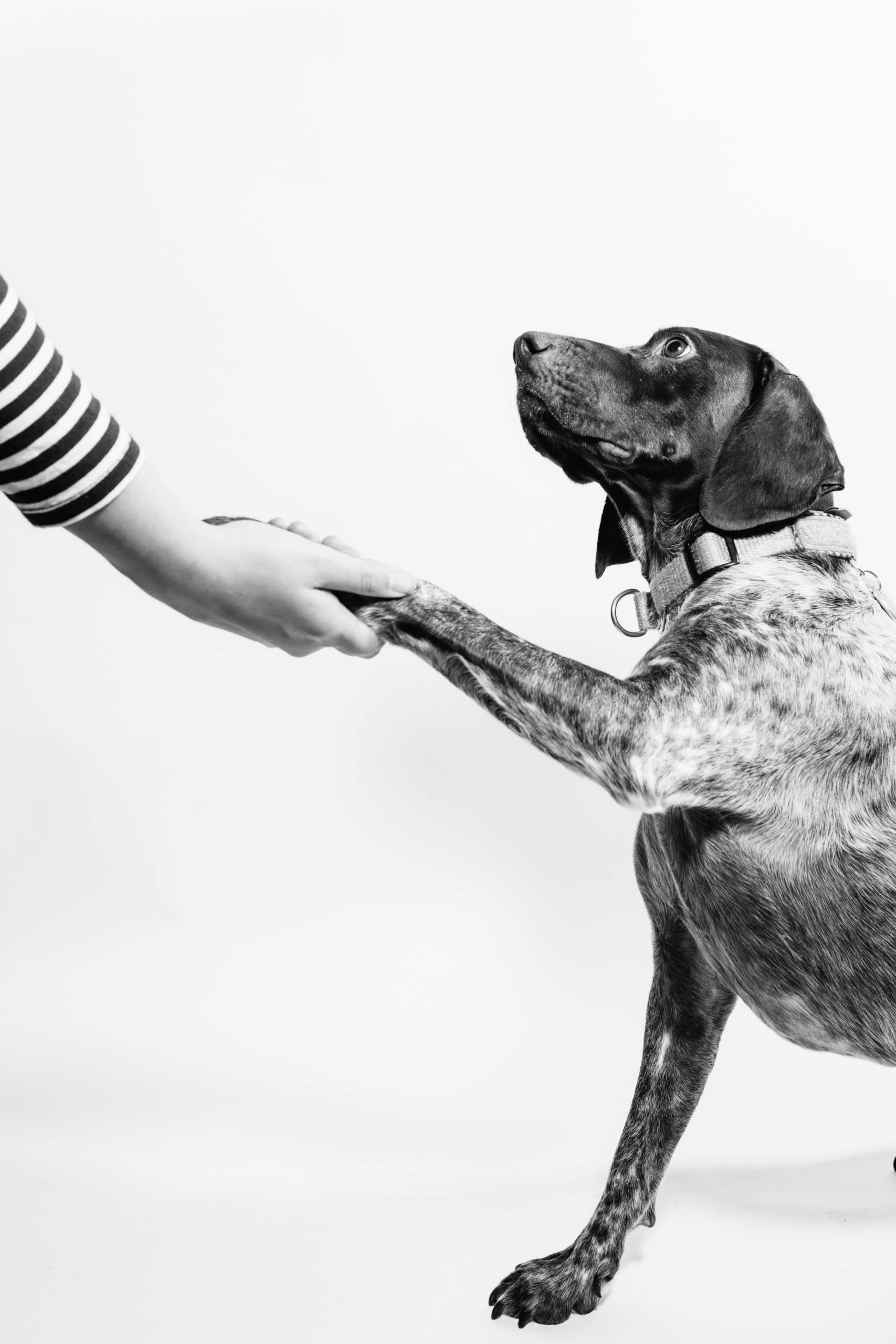Dogs are fascinating creatures, capable of expressing a wide range of emotions and intentions through their body language. As dog owners, it’s essential to understand these nonverbal cues to strengthen our bond with them and prevent misunderstandings that could jeopardize safety or well-being.
This blog aims to provide you with insights into canine body language, from facial expressions and tail positions to vocalizations and breed-specific behaviors.
The Importance Of Understanding Dog Body Language
Understanding dog body language is crucial for effective communication and preventing misunderstandings that can lead to dangerous situations.
Communication With Dogs
Effective communication with dogs is essential to establish a strong bond, fostering trust, and enhancing overall well-being. As dogs primarily rely on body language and posturing to convey their emotions and intentions, understanding these nonverbal cues is crucial for pet owners.
To improve communication with your furry friend, observing canine behavior in different contexts is key. Familiarize yourself with various signals by paying close attention to changes in their facial expressions, tail positions, body postures, and vocalizations as they interact with other animals or humans.
This practice will enable you to better discern if your dog’s stance indicates playfulness or aggression when meeting new friends at the dog park.
Preventing Misunderstandings And Dangerous Situations
Understanding dog body language is not just about developing a deeper bond with your furry friend. It’s also about preventing misunderstandings and potentially dangerous situations.
For example, if a dog has its ears flattened back against the head, it may be feeling fearful or anxious. If an unfamiliar person approaches too quickly without reading this signal, they could inadvertently trigger a defensive response from the dog.
Similarly, if your own dog exhibits signs of anxiety or fear when around strangers or other animals, it’s important to recognize these signals early on so that you can step in and manage the situation appropriately.
By being aware of your pet’s nonverbal communication cues and taking action accordingly, you’ll reduce the risk of harm coming to either your furry friend or those around them.
Types Of Dog Body Language
Dogs have a complex language that allows them to communicate their emotions and intentions, which can be broken down into various categories such as facial expressions, tail positions, body posture, and vocalizations.
Facial Expressions
Dogs use facial expressions to communicate their emotions and intention effectively. The position of the eyes, ears, mouth, and eyebrows can all indicate different things about how a dog is feeling.
A relaxed dog will have their mouth slightly open or closed with no tension in their lips or nose. Their ears will be in a natural position without being erect or flattened against the head.
On the other hand, when a dog is scared or anxious, it may hold its body tense with dilated pupils and raised hackles on its neck and back. Its ears may be pinned back against its head to protect them from potential danger.
Dogs also often bear their teeth as an aggressive signal; however, this doesn’t always mean that they are actually going to attack.
Tail Positions And Movements
One of the most common ways in which dogs communicate their emotions is through their tails. The position and movement of a dog’s tail can tell you a lot about how they’re feeling.
A relaxed, happy dog will have its tail held at a natural level or wagging gently. However, if the tail is held high and stiff with rapid movements, it usually indicates excitement or alertness.
It’s important to also consider the speed and direction of your dog’s tail movements when interpreting body language. Quick side-to-side wags generally indicate happiness and friendliness while slow swishing back and forth can suggest uncertainty or anxiety.
A stiffly wagging tail could be interpreted as a sign of aggression or dominance rather than joyfulness.
Body Posture
One of the most significant aspects of understanding dog body language is observing their body posture. Dogs convey a lot through their postures, from relaxed and content to tense and anxious.
A dog’s posture can indicate whether they are feeling confident or fearful, aggressive or submissive.
It’s important to note that different breeds have different natural postures that you should consider when interpreting your pet’s behavior. Another critical thing to observe is changes in posture during specific situations like meeting new people or animals, stress triggers like loud noises or unfamiliar environments as these can also indicate underlying emotions being expressed nonverbally by your furry friend.
Vocalizations
Dogs are known to use sounds and vocalizations as part of their communication. Some dogs may bark, growl, whimper, or howl, among other things. These sounds often convey specific emotions such as excitement, aggression, fear, or anxiety.
It is essential for dog owners to pay attention to the various sounds their furry friends make and interpret them in conjunction with body language cues. A combination of vocalization and posturing can provide valuable information about a dog’s emotional state and intentions.
Understanding these signals can help prevent misunderstandings between you and your pet and promote positive interactions.
How To Interpret Dog Body Language
To interpret dog body language effectively, one must consider the context and environment, observe multiple signals from various parts of the body simultaneously, understand breed-specific behaviors, and recognize signs of happiness, fear or anxiety, and aggression.
Consider The Context And Environment
To effectively interpret dog body language, it’s crucial to consider the environment and context of their behavior. For instance, a wagging tail doesn’t always mean your furry friend is happy.
It could indicate excitement or nervousness in different situations.
Understanding the surroundings and situation plays a vital role in interpreting canine communication cues accurately. A tail tucked between the legs might signify submission or fear when surrounded by strangers but could also suggest pain or discomfort due to injury.
Therefore, examining other nonverbal indicators such as ear position and facial expressions helps pet owners assess more accurately what their dogs are communicating through their bodies.
Observe Multiple Signals
To effectively interpret dog body language, it’s essential to observe multiple signals as dogs tend to communicate through a combination of things like facial expressions, body postures, and vocalizations.
For instance, when a dog is wagging its tail but has its ears back or is growling, this may not signify happiness but could rather be an indication of fear or aggression.
Similarly, if your dog appears restless or cowers away from someone while barking, it could be an indication of anxiety.
For instance, suppose your furry friend seems tense and nervous around strangers at first glance. In that case, you might notice other subtle signals such as pinned-back ears or a lowered head indicating discomfort in that situation.
Understand Breed-Specific Behaviors
It is crucial to understand breed-specific behaviors when interpreting dog body language. Different breeds have varying temperaments and characteristics that affect their communication style.
For example, herding breeds like Australian Shepherds may display certain behaviors such as nipping or circling to communicate their need for control, while Retrievers tend to use a more relaxed posture and wagging tail to show friendliness.
It’s essential to research your dog’s breed traits so you can better interpret their behavior and respond appropriately.
Signs Of Happiness
Your dog’s happiness is one of the most critical things to understand as a pet owner. Here are some signs that show your dog is happy:
- Your dog has a relaxed body posture.
- Your dog’s tail wags in a loose and fluid motion.
- Their ears are positioned forward, but not tense or laid flat.
- They have bright eyes and relaxed facial expressions, with their mouth slightly open, showing no teeth.
- They playfully jump around or simply enjoy playing with toys or other dogs.
- Your dog seeks attention or cuddles by nudging your hand for pets or lap time during television watching.
It’s important to note that dogs’ body language may vary depending on personality, breed, and situation. Understanding how your furry friend shows their happiness can help you create positive experiences and strengthen your bond with them!
Signs Of Fear Or Anxiety
Dogs can communicate their emotional state through their body language. If your dog is feeling anxious or afraid, they may display the following signs:
- Shaking or trembling
- Pacing back and forth
- Panting excessively
- Cowering or hunching over
- Keeping a low tail position or tucking their tail between their legs
- Avoiding eye contact
- Whining, growling, or barking excessively
- Licking their lips repeatedly
- Decreased appetite or refusal to eat
- Going to the bathroom indoors
It is important to pay attention to these signs and try to identify the source of your dog’s discomfort so that you can take steps to help them feel more comfortable and secure. Providing a calm and safe environment with positive reinforcement training can help reduce feelings of anxiety in dogs.
Remember, dogs rely heavily on nonverbal communication, so understanding their body language is essential for effective communication and building a strong bond with your furry friend.
Signs Of Aggression
Aggression is a natural behavior in dogs, but it can be dangerous if not understood and handled correctly. Here are some common signs of aggression that dog owners should look out for:
- Growling or snarling
- Showing teeth
- Stiff body posture
- Raised fur on the back
- Lunging or snapping
- Barking excessively
- Direct eye contact
- Urinating inappropriately
If your dog shows any of these signs of aggression, it’s essential to distance yourself and others from the dog immediately to prevent any harm. Seek professional help to understand the root cause of their aggression and how to manage it effectively.
Remember that aggressive behavior can be triggered by fear, anxiety, illness, or territorial instincts, and understanding your dog’s behavior can help you communicate better with them while keeping everyone safe.
Tips For Better Communication With Your Dog
Build a stronger bond with your dog by being patient and observant, seeking professional help when necessary, prioritizing safety and comfort, using positive reinforcement training, and following our tips for interpreting dog body language – read on to learn more!
Building A Strong Bond
Establishing a strong bond with your furry companion is essential to maintain a healthy and happy relationship. Dogs are social animals and require constant interaction, attention, and care from their owners.
To build a strong bond with your dog, you must spend quality time together and be patient while getting to know each other’s likes, dislikes, emotions, and behaviors.
Positive reinforcement training can also help strengthen the bond by building trust through reward-based methods instead of punishment. By paying close attention to your dog’s body language cues such as wagging tails or relaxed facial expressions during training sessions can indicate that they enjoy them.
Additionally, showing affection by petting them or praising them for good behavior reinforces positive reinforcement techniques further strengthening the bond between owner and canine.
Being Patient And Observant
To better understand your dog’s body language, it is essential to be patient and observant. Take the time to watch your pet carefully when they interact with people or other dogs.
If you’re not sure of what a particular behavior might mean, take note of the context in which it occurs. For instance, if your dog starts growling while playing tug-of-war, this may simply be part of the game.
By taking the time to observe and interpret your dog’s behavior accurately and consistently over time through patience and observation techniques as described above, you will gain a better understanding of their emotional state and needs.
Seeking Professional Help
If you are having issues interpreting your dog’s body language, seeking professional help can be a good solution. An experienced trainer or behaviorist can help you understand the subtle nuances of canine communication and teach you how to read your furry friend’s emotional signals more effectively.
It is important to prioritize safety when it comes to managing aggressive or anxious dogs, and professional intervention may be necessary in some cases. Additionally, if a medical issue is causing your dog’s behavioral problems, a veterinarian may need to be consulted to rule out any underlying health issues.
Positive Reinforcement Training
One of the best ways to communicate and build a strong bond with your dog is through positive reinforcement training. This method focuses on rewarding good behavior rather than punishing bad behavior, creating a positive association for your pet while also encouraging them to repeat that behavior in the future.
For example, if you want to train your dog to sit on command, you can reward them with treats or praise when they successfully obey.
Positive reinforcement training not only strengthens the relationship between you and your pet but also helps prevent unwanted behaviors that may stem from fear or anxiety.
By using this technique, you can ensure that any communication between you and your canine companion remains clear and effective while helping them feel happy and secure in their environment.
Prioritizing Safety And Comfort
When communicating with your dog, it is essential to prioritize their safety and comfort. This means being aware of their body language and signals that may indicate they are uncomfortable or feeling threatened.
For example, if your dog displays signs of fear or anxiety around other dogs, do not force them into social situations where they feel uncomfortable. Instead, work on building their confidence through positive reinforcement training in a safe environment.
By prioritizing safety and comfort when interacting with your furry friend, you can build trust and establish a strong bond based on mutual respect and understanding.
Conclusion
Understanding dog body language is an essential skill for any dog owner. Not only does it help prevent dangerous situations, but it also fosters better communication and strengthens the bond between you and your furry friend.
By observing their body posture, facial expressions, ear position, tail carriage, and vocalizations, you can interpret their emotions accurately. Remember to consider context, observe multiple signals, and understand breed-specific behaviors when interpreting canine behavior cues.
FAQs:
1. What are the common body language signals that dogs use to communicate?
Common body language signals used by dogs include wagging tails, raised hackles, ears pinned back, lip licking, yawning, and growling. Understanding these signals can help you better interpret a dog’s mood and intentions.
2. Why is it important to pay attention to a dog’s body language?
Paying attention to a dog’s body language is critical for their safety as well as your own. By understanding their communication cues, you can identify if they are feeling scared or threatened and take steps to reduce the risk of aggression or biting.
3. How do I know if my dog is happy based on their body language?
A happy dog will have relaxed muscles in their face and body with an open mouth panting rhythmically and often wagging its tail while displaying loose posture when approaching people or other animals.
4. Can I teach my dog new types of body language cues?
It’s possible! Dogs are incredibly intelligent creatures capable of adapting quickly through consistent training techniques specifically designed around rewarding desired behaviors thereby earning positive reinforcement each time they display them this leads to creating healthy cycles where repeating such actions becomes second nature over time so using these same principles could potentially be adapted towards generating new forms of nonverbal communications between pet owners & individuals who encounter related situations frequently like those involved with rescue operations.



